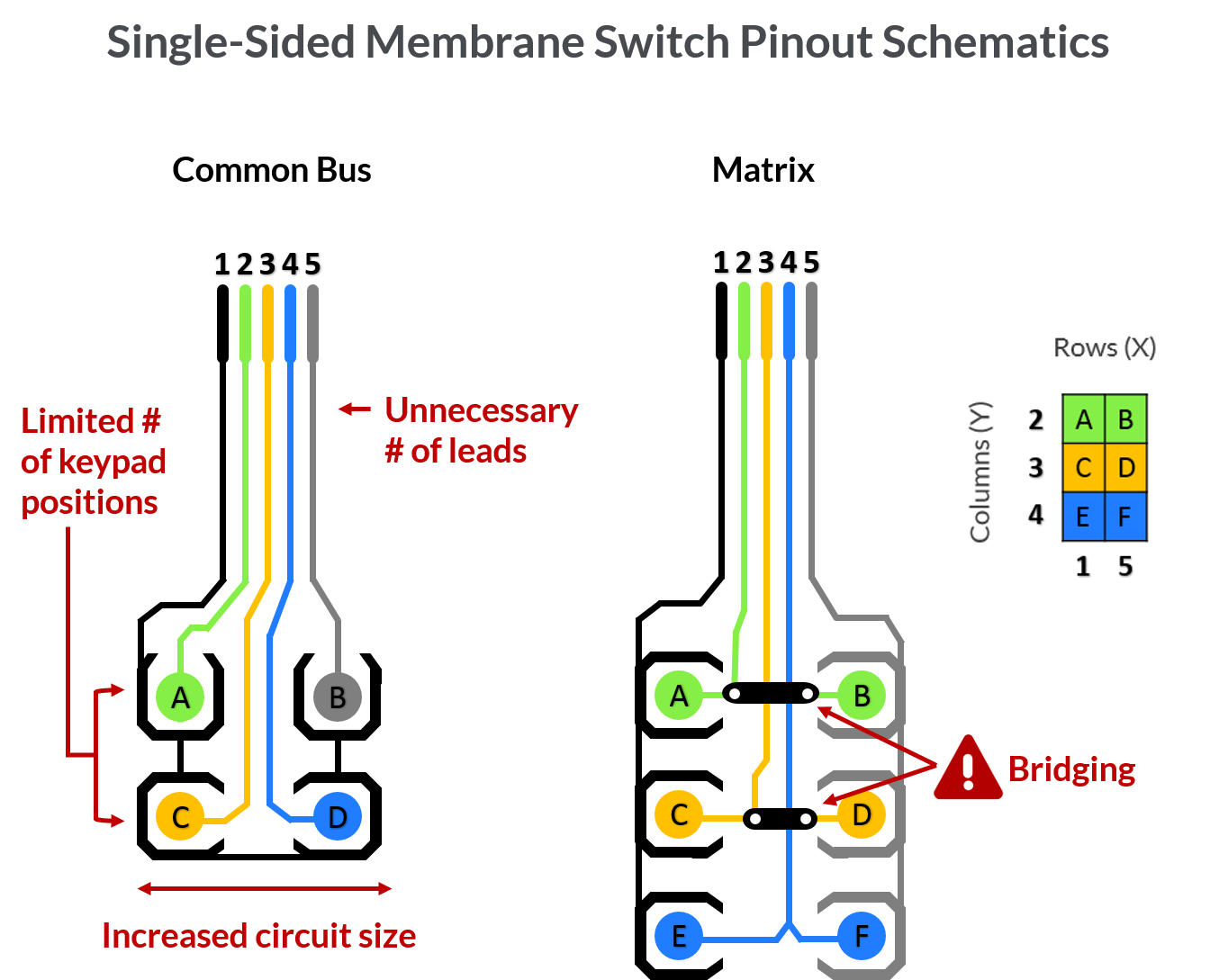Learn more about the Ingenious Manufacturing Techniques Behind Membrane Switches
Learn more about the Ingenious Manufacturing Techniques Behind Membrane Switches
Blog Article
The Ultimate Source on Membrane Changes: Layout, Performance, and Applications
Membrane switches over serve as an interesting junction of layout and capability, playing an essential role in modern individual interfaces throughout numerous markets. As we explore the varied applications of membrane layer buttons, it becomes evident that their versatility and durability are important in environments varying from healthcare to consumer electronics.

Understanding Membrane Buttons
Membrane switches are a kind of interface innovation extensively made use of in different electronic tools, identified by their thin, flexible design and functionality. These switches include numerous layers that include visuals overlays, glue layers, and wiring, enabling a effective and portable user interface for individuals. They can be found in home appliances, medical devices, and commercial control board, giving a trustworthy method for individual communication.
One of the key advantages of membrane layer switches is their ability to stand up to contaminants such as dirt and dampness, making them suitable for environments where toughness is essential. Their inconspicuous style enables smooth assimilation into different applications, while the adjustable graphic overlays improve individual experience by supplying clear visual feedback. In addition, membrane layer buttons can suit a selection of modern technologies, such as tactile feedback and backlighting, more enhancing their use.
The production procedure for membrane changes commonly entails display die-cutting, lamination, and printing strategies, making certain accuracy and uniformity in manufacturing. In general, membrane changes stand for a reliable and flexible option for modern electronic gadgets, integrating functionality with aesthetic appeal in interface layout.
Key Parts and Layout Components
A variety of essential elements and layout elements come with each other to create an effective membrane layer button. At the core, the visuals overlay serves both useful and visual purposes, using an easy to use user interface while protecting interior parts from environmental variables. The choice of products, generally polyester or polycarbonate, influences durability and responsive feedback.
Underneath the overlay, the sticky layer makes sure the switch sticks firmly to the substratum, which can be glass, metal, or plastic. The spacer layer is critical, as it maintains the needed gap in between the circuit and the overlay layers, permitting efficient actuation. Membrane Switches. Circuit traces, typically made from conductive ink or adhesive, are published on a versatile substratum, enabling electrical signals to be transferred when pressure is used
Layout factors to consider likewise consist of the arrangement of responsive domes or embossing that supply physical responses to the user, boosting the general experience. Furthermore, the format and spacing of the buttons have to be enhanced for convenience of use, ensuring that individuals can browse the user interface with ease. Overall, these elements and layout aspects work synergistically to create a reliable, practical membrane button customized to specific applications.
Functionality and Procedure Device
At the heart of efficient capability for membrane layer changes exists their functional mechanism, which helps with customer interaction through an easy yet reliable layout. These switches operate the principle of stress activation, go to my site where a customer applies pressure to a designated location of the button (Membrane Switches). This activity compresses the layers of the button, completing an electric circuit that sends a signal to the linked gadget
The construction generally includes a top graphic layer, an adhesive spacer layer, and a bottom circuit layer, which collectively develop a durable user interface. When pressure is applied, the leading layer collapses against the lower circuit layer, enabling conductive traces to link. This layout not only enables clear responsive feedback but also guarantees toughness and reliability, as the buttons are commonly immune to dust and dampness.
In addition, the adaptability of membrane switches allows for combination with numerous technologies, consisting of LED indications and microcontrollers, improving their performance. By supplying a structured interface that minimizes mechanical wear, membrane changes continue to be a popular selection in applications ranging from customer electronic devices to commercial tools, ensuring optimum efficiency and individual contentment across diverse atmospheres.
Sorts Of Membrane Layer Switches

An additional considerable classification is illuminated membrane layer buttons, which include backlighting to boost presence in low-light conditions. These switches are often utilized in control panels and control panels where clear visibility is necessary.
In addition, there are customized membrane layer switches developed to satisfy details dimensional, visual, and useful demands. These modifications can consist of special forms, shades, and designs, permitting smooth assimilation into various gadgets.

Applications Across Different Industries
How do membrane layer switches enhance performance best site across varied markets? In the medical market, membrane layer buttons play an important duty in devices such as analysis equipment and patient surveillance systems, where dependability and simplicity of cleaning are extremely important.
In the auto industry, membrane layer switches are frequently used in dashboards and control board, giving intuitive controls that improve chauffeur safety and security and benefit. The consumer electronic devices field additionally gains from their personalized and light-weight features, making it possible for smooth layouts for mobile phones and home devices.
In addition, membrane layer switches locate applications in commercial automation, where they contribute to reliable machinery procedure and monitoring systems. Their resistance to dust and dampness makes sure capability sought after problems (Membrane Switches). Furthermore, the food and drink market utilizes membrane switches for equipment control, where health and toughness are vital
Verdict
In verdict, membrane switches stand for a critical technology in user interface innovation, characterized by their one-of-a-kind design and functionality. The convenience of membrane layer changes promotes their application across varied industries, from medical gadgets to consumer electronics.
Membrane layer switches offer as an appealing crossway of design and performance, playing a pivotal role in contemporary user interfaces throughout numerous industries.Membrane switches are a type of customer interface modern technology commonly made use of in various electronic tools, characterized by their slim, adaptable my company style and performance.At the heart of reliable functionality for membrane layer switches lies their functional mechanism, which promotes user communication with an easy yet efficient design. These switches operate on the principle of stress activation, where a customer applies pressure to a marked location of the switch.In verdict, membrane layer switches represent an important advancement in user interface technology, identified by their unique layout and performance.
Report this page